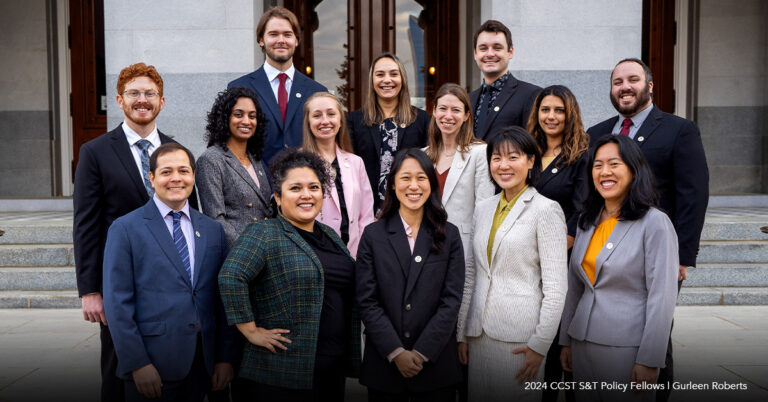Update: Applications for the CCST Science & Technology Policy Fellowship Have Closed
California Energy Futures Project Member Wins Fermi Award
January 19, 2012 | CCST Newsroom | Contact: M. Daniel DeCillis

Nobel laureate Burton Richter, a member of the CCST California’s Energy Future (CEF) team and lead author of the 2011 CEF subreport on nuclear energy, has been awarded the Enrico Fermi Award, one of the nation’s most prestigious science awards, in recognition of his eminent career in particle physics and his notable contributions in energy and public policy. Richter was named along with one other honoree, Mildred S. Dresselhaus, in an address by Secretary of Energy Steven Chu last week.
“The scientists being recognized today with the prestigious Enrico Fermi Award have provided scientific leadership throughout their careers that has strengthened America’s energy and economic security,” said Chu. “I congratulate them for their achievements as pioneers in innovative research and thank them for their service.”
Richter, a CCST Senior Fellow, is Paul Pigott Professor in the Physical Sciences Emeritus at Stanford University, and a former director of the Stanford Linear Accelerator Center. He has long been engaged in energy policy discussions at the national level, but the CCST study marks one of his first major forays into similar discussions at the state level.
“I hope people will pay attention to this work,” said Richter. “It’s the first systems analysis exploring the specifics of what possibilities our current technologies hold for lowering emissions to meet California’s standards by 2050. We found that, even in a best-case scenario, it just isn’t feasible with existing and near-horizon technologies.”
The CCST report Powering California with Nuclear Energy, one of several subgroup reports that make up the CEF study, looks at a highly charged issue from a range of perspectives, from realistic to extreme scenarios in terms of how much the state could rely on nuclear energy. Despite the controversial issues, nuclear power should be be considered a strong contender for part of the energy mix; its zero-emissions energy can provide constant, or ‘baseload,’ power that can complement renewable energy sources such as solar and wind, which provide power intermittently.
For Richter, the CEF group of studies – which, in addition to the nuclear energy report, includes reports on transportation energy use, building efficiency, and carbon capture – is a valuable step in an ongoing process, but there is additional work to do.
“At this point, two things need to be done: first, we need to factor cost into the study of California’s different energy strategies – we only focused on technical feasibility. Second, we need to identify missing pieces of technology to make the most of the options we have. One thing that struck us is the lack of any viable grid-scale zero emission power storage technologies. Currently the only flexible backup we have for intermittent power sources such as wind is gas-fired turbines – which have very high emissions. It’s only recently that people have begun to look seriously at how you actually implement alternative energy sources on a large scale.”
While the impetus to address these issues needs to come in large part from the federal level – the Department of Energy has in fact begun soliciting proposals on grid-scale energy storage research – California is in a good position to help shape the discussion and develop policy strategies that are right for its own energy needs, according to Richter.
“California is particularly fortunate in its collection of superb research universities and federal funded laboratories,” he said. “The state government should make more use of the expertise that these institutions contain, and ask more of CCST, which helps to focus this expertise in a way that is useful to government.”






